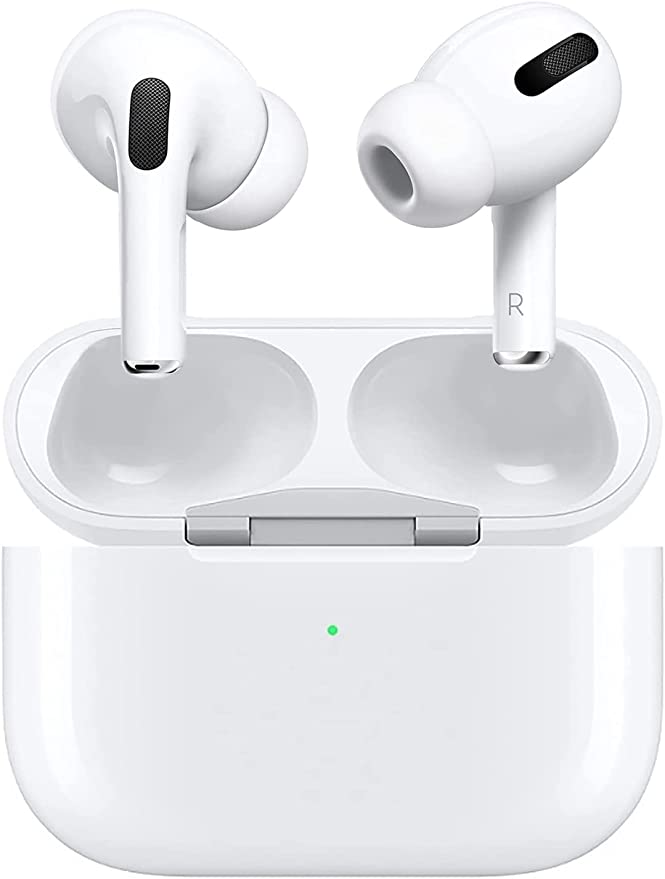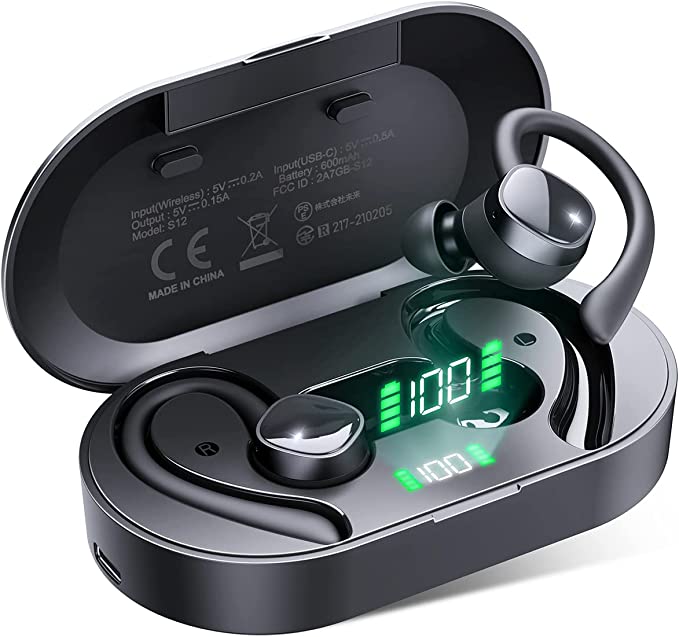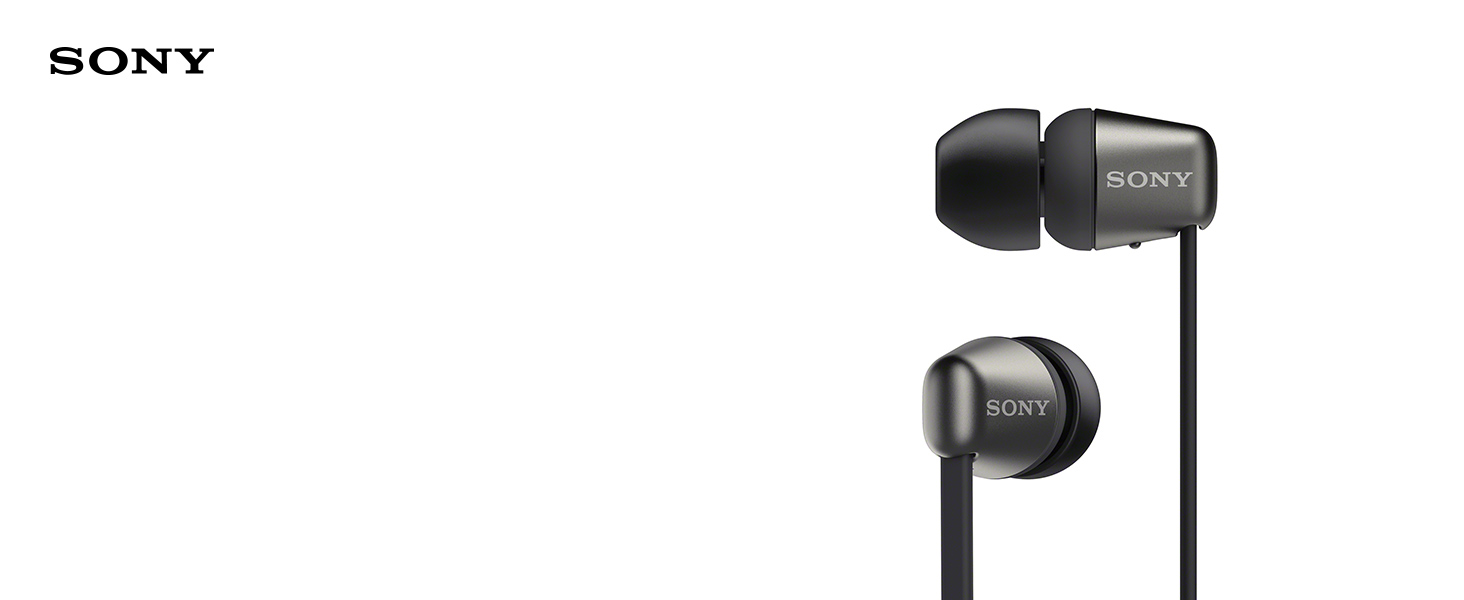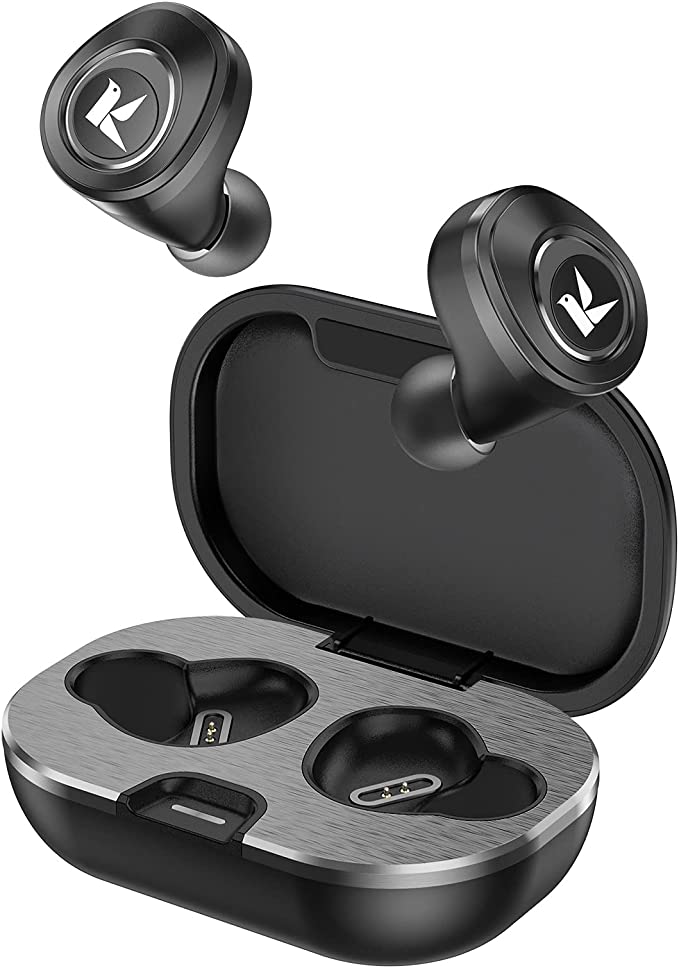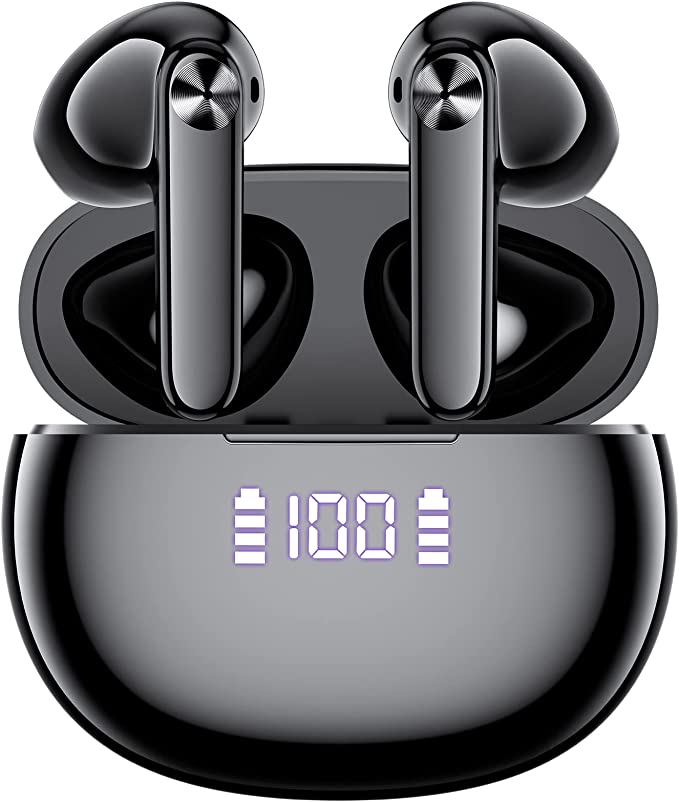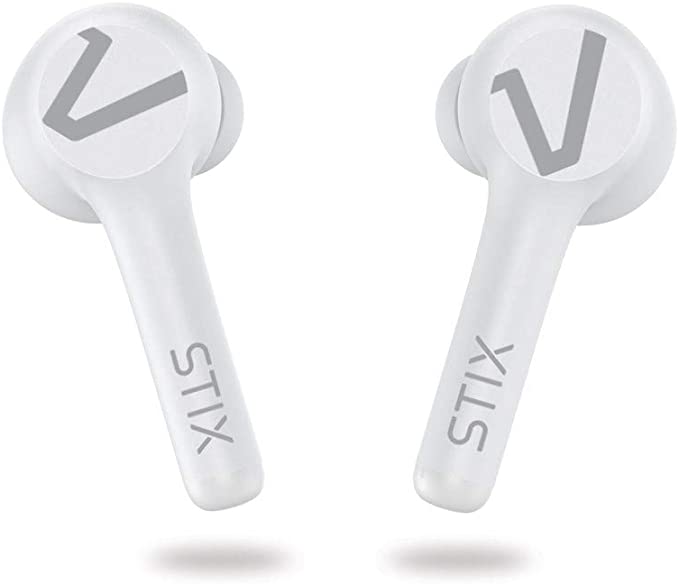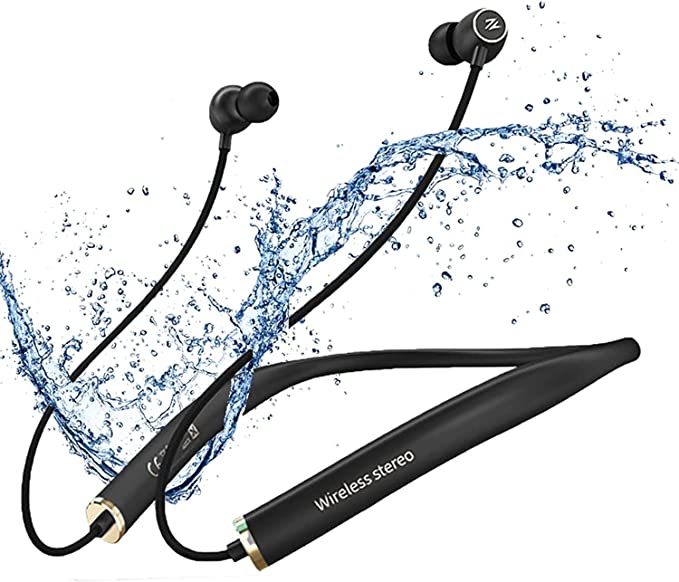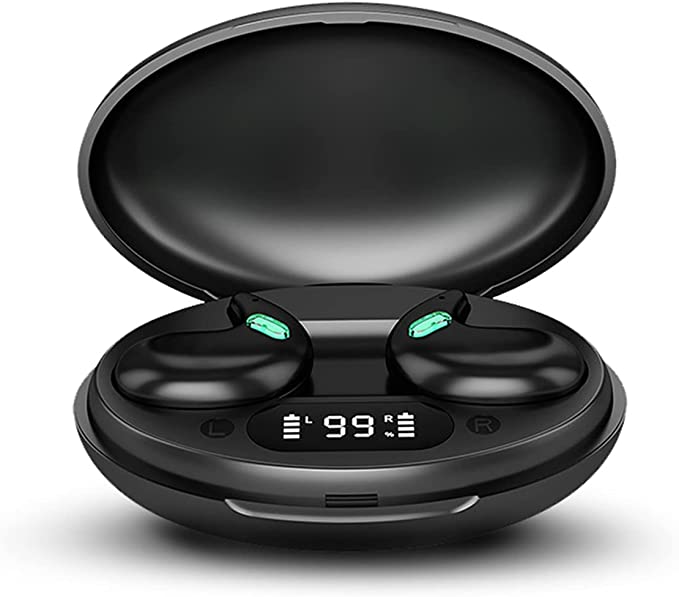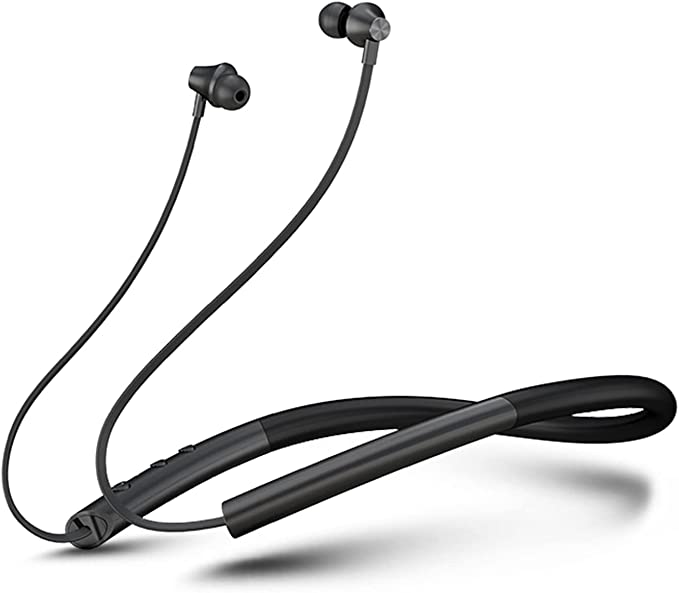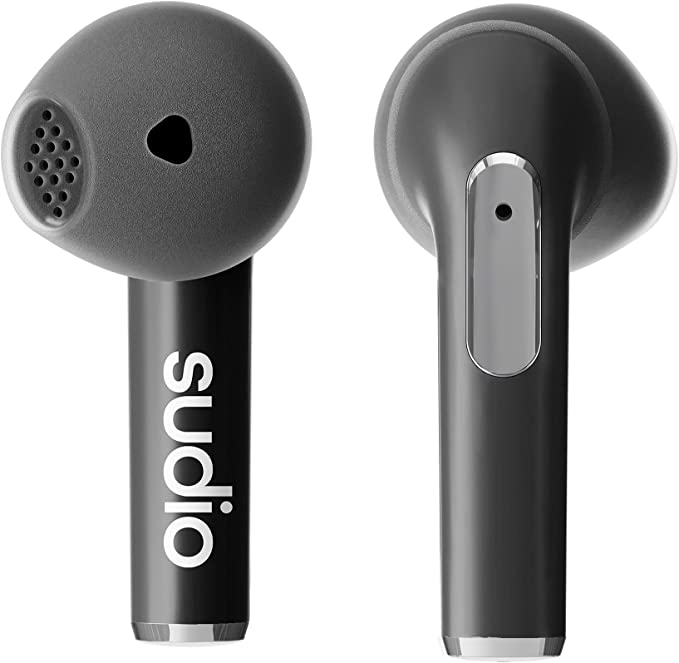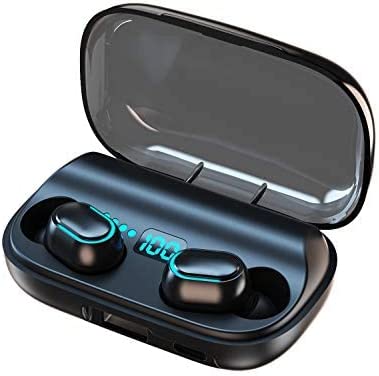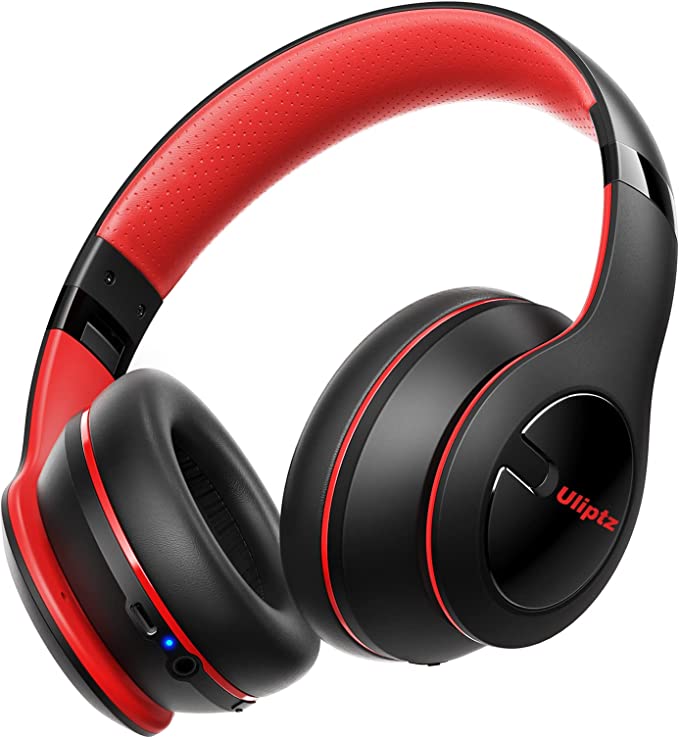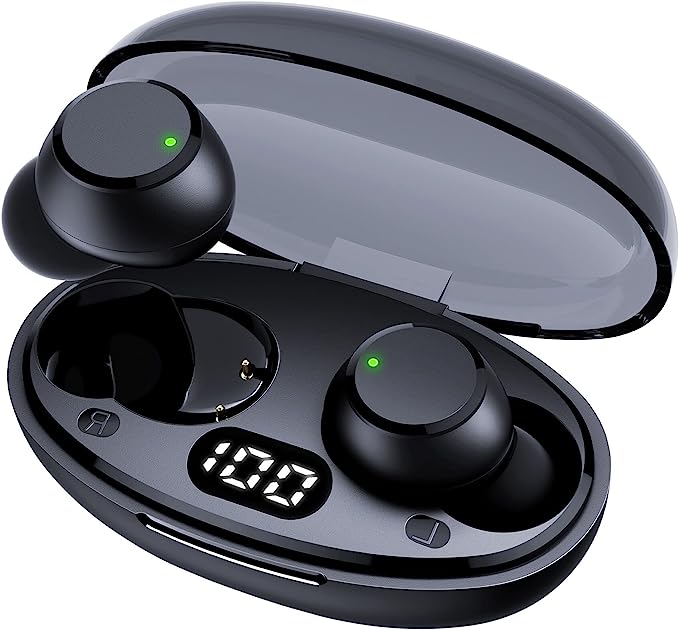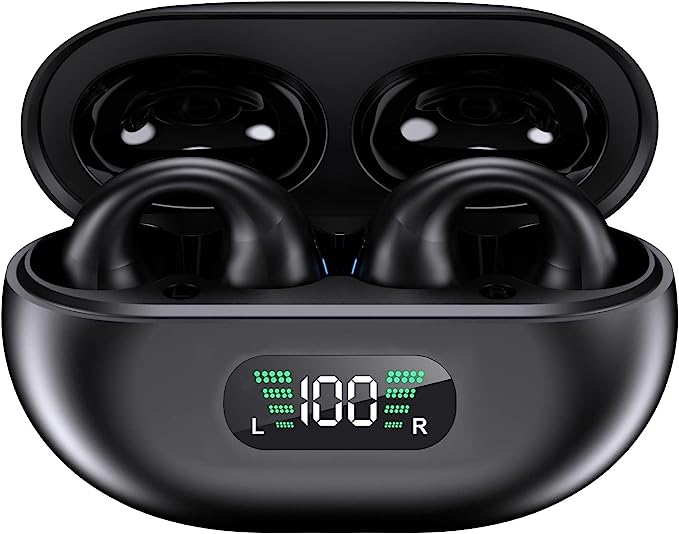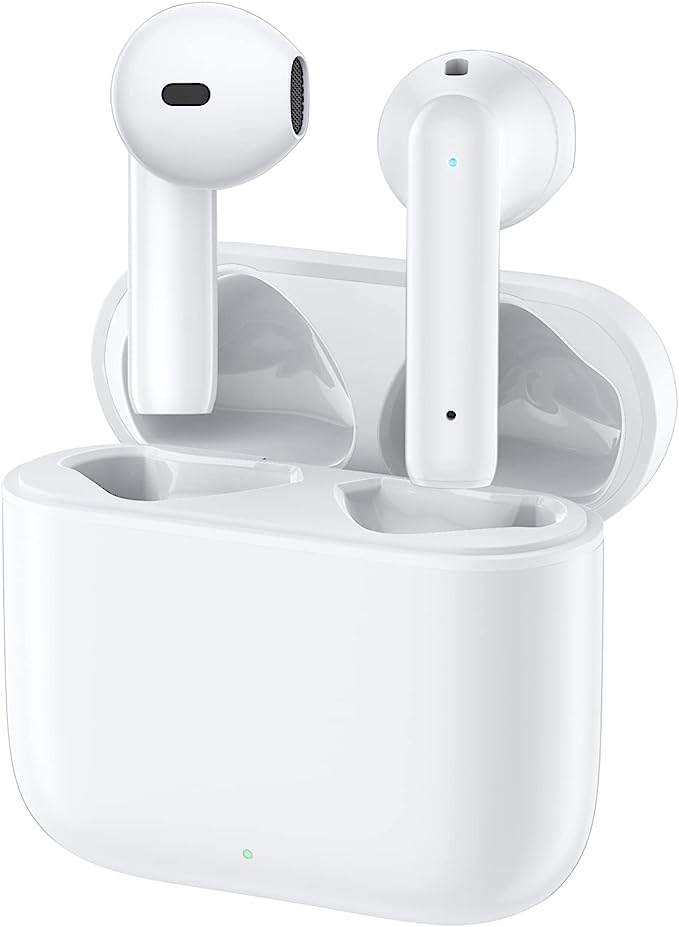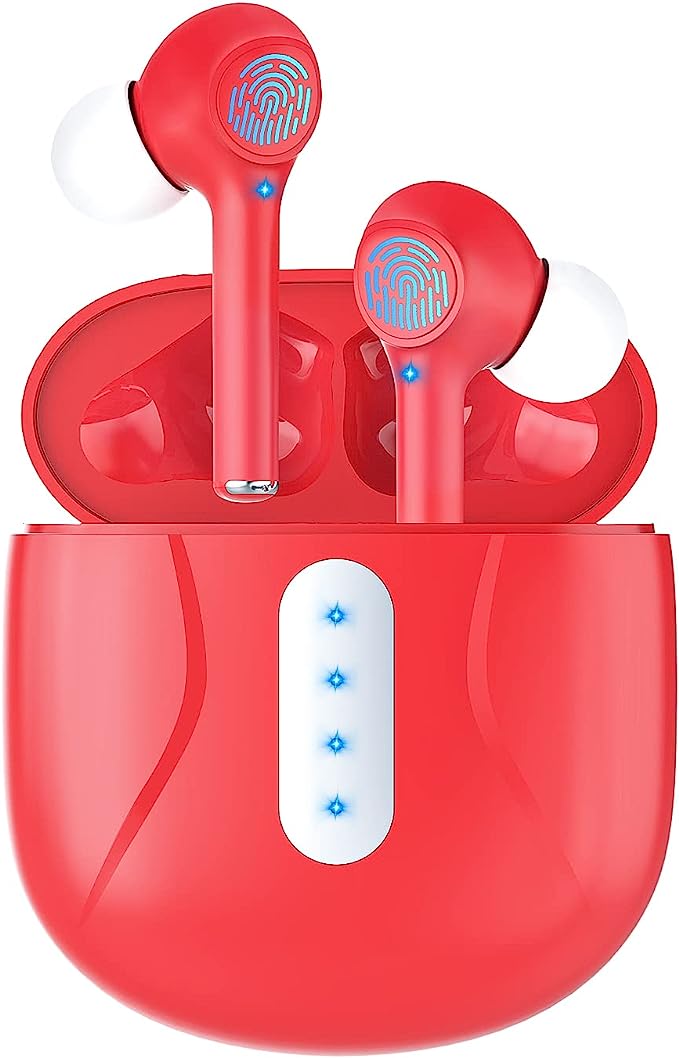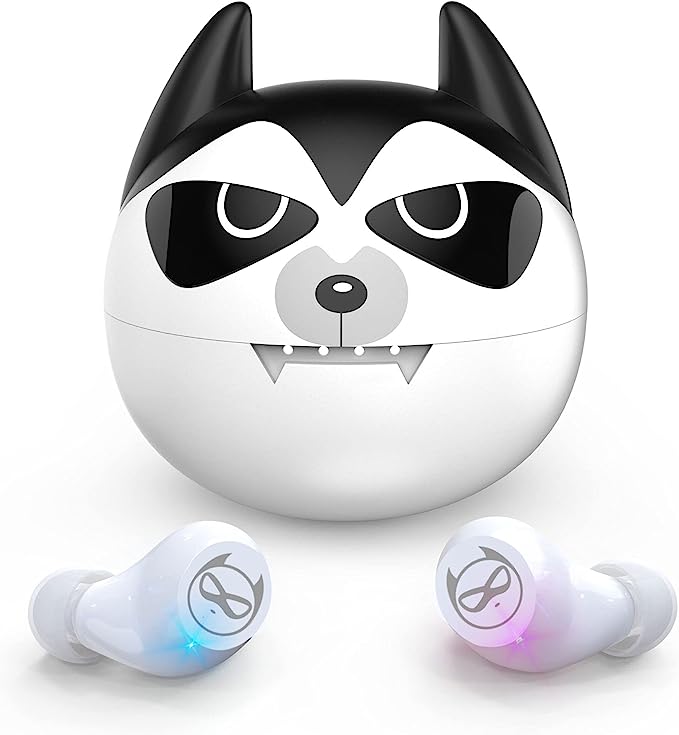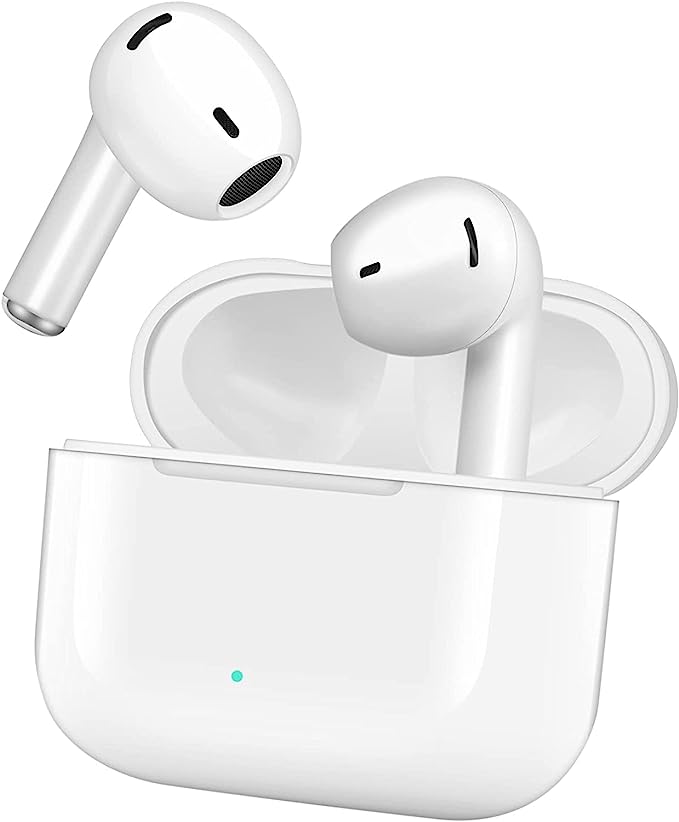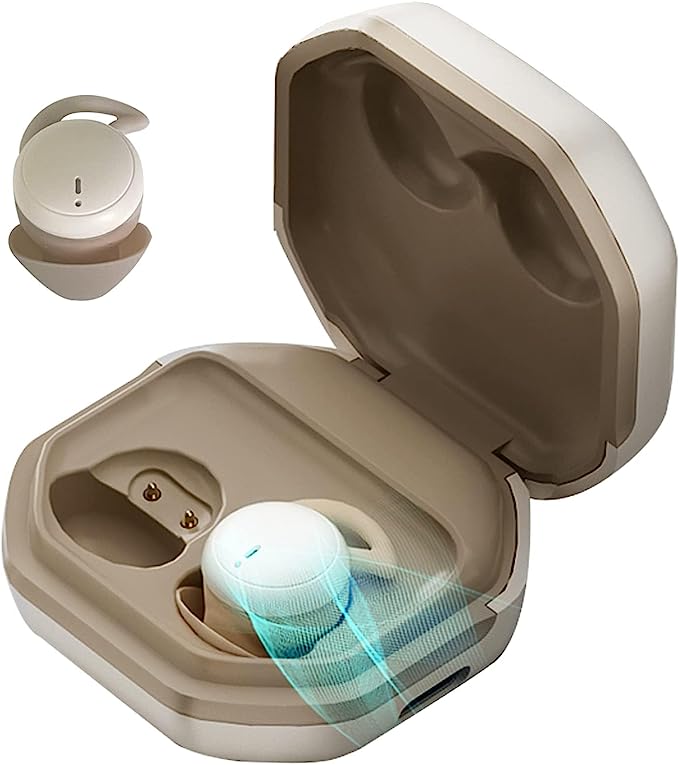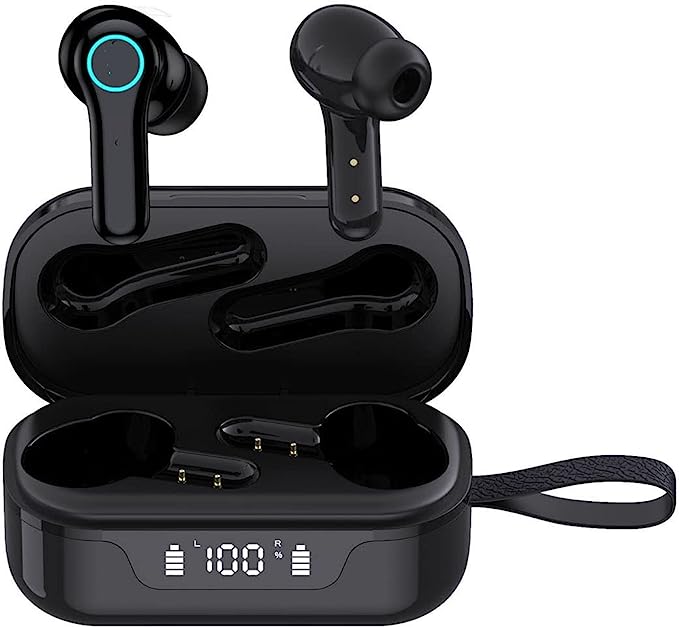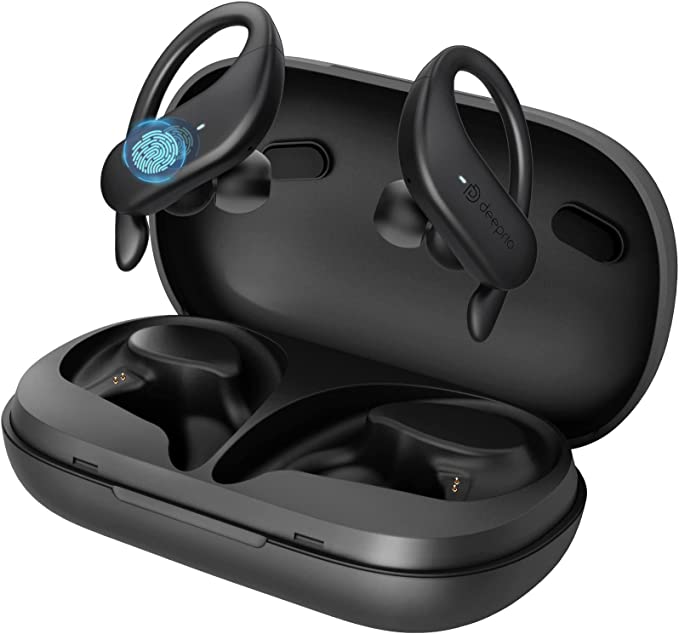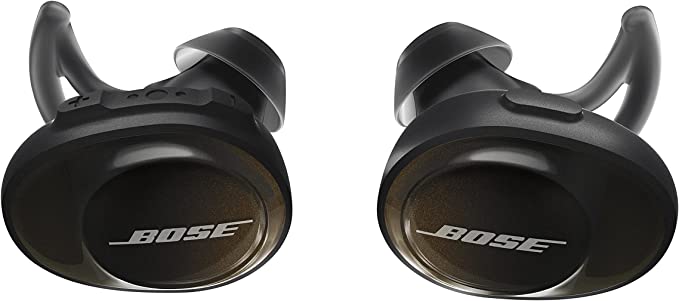Diuyose True Wireless Earbuds: Unveiling the Science of Sound and Silence
Update on Feb. 17, 2025, 6:25 a.m.
A World of Sound (and Noise)
Sound is everywhere. It’s the laughter of children, the melody of a favorite song, the gentle rustling of leaves. But it’s also the roar of traffic, the drone of airplanes, the incessant chatter of a crowded office. While sound enriches our lives, unwanted sound – noise – can be a significant source of stress and distraction. In our increasingly noisy world, the ability to control what we hear has become more important than ever. This is where the evolution of personal audio technology, culminating in devices like the Diuyose True Wireless Earbuds, plays a crucial role.

The Quest for Personal Audio: A Brief History
The journey from bulky, wired headphones to sleek, wireless earbuds has been a remarkable one. Early headphones, dating back to the late 19th and early 20th centuries, were primarily used for communication purposes by telephone operators and radio enthusiasts. They were often heavy and uncomfortable, far from the portable devices we know today. The invention of the transistor in the mid-20th century revolutionized electronics, paving the way for smaller and more efficient headphones. The Walkman, introduced in 1979, marked a turning point, making personal audio truly portable and ushering in a new era of music consumption. The digital revolution further transformed the landscape, with MP3 players and smartphones becoming ubiquitous sources of music. And finally, the advent of Bluetooth technology ushered in the era of wireless headphones, freeing us from the tangle of cords.

Understanding Sound: The Basics
Before we delve into the intricacies of noise cancellation and wireless technology, let’s take a moment to understand the fundamentals of sound. Sound is essentially a vibration that travels through a medium, such as air, water, or solids. These vibrations create waves, characterized by their frequency and amplitude. Frequency, measured in Hertz (Hz), determines the pitch of a sound – how high or low it sounds. Humans can typically hear sounds ranging from 20 Hz (very low bass) to 20,000 Hz (very high treble). Amplitude, on the other hand, determines the loudness of a sound, measured in decibels (dB). The higher the amplitude, the louder the sound.
The Challenge of Noise Cancellation
Noise cancellation technology aims to reduce or eliminate unwanted ambient sounds, allowing us to focus on the audio we want to hear – whether it’s music, a podcast, or a phone call. There are two main types of noise cancellation:
- Passive Noise Cancellation: This relies on the physical design of the earbuds to block out noise. A tight seal between the earbud and the ear canal prevents sound waves from entering, similar to putting your fingers in your ears.
- Active Noise Cancellation (ANC): This is a more sophisticated approach that uses electronic circuitry to actively counteract noise. Microphones on the earbuds “listen” to the ambient noise, and a processor generates an “anti-noise” signal that is 180 degrees out of phase with the noise. When these two signals combine, they effectively cancel each other out. Some systems use a hybrid approach, combining both passive and active noise cancellation for maximum effectiveness. While the provided documentation specifies “noise cancellation,” it does not specify the type. Given the presence of MEMS microphones, it’s highly probable that the Diuyose earbuds utilize either active or hybrid noise cancellation.

Diuyose and the Science of Silence
The Diuyose True Wireless Earbuds leverage several key technologies to deliver a superior listening experience, particularly in noisy environments.
MEMS Microphones: Tiny Ears, Big Impact
Micro-Electro-Mechanical Systems (MEMS) microphones are miniature microphones built using microfabrication techniques, similar to how computer chips are made. They consist of a tiny diaphragm that vibrates in response to sound waves. These vibrations are converted into electrical signals, which are then processed and amplified. MEMS microphones offer several advantages over traditional microphones:
- Small Size: Their compact size allows them to be easily integrated into small devices like earbuds.
- Low Power Consumption: They require very little power to operate, contributing to longer battery life.
- High Sensitivity: They are highly sensitive to sound, capturing even subtle nuances.
- Durability: They are more resistant to shock, vibration, and temperature changes.
- Consistency: Because they are manufactured using precise microfabrication techniques, they exhibit excellent consistency in performance.
Digital Signal Processing (DSP): The Brains of the Operation
Digital Signal Processing (DSP) is a crucial component of modern audio devices. A DSP chip is essentially a specialized computer that is optimized for processing audio signals. In the context of noise cancellation, the DSP chip performs several critical tasks:
- Analyzing Noise: It analyzes the signals from the MEMS microphones to identify the characteristics of the ambient noise.
- Generating Anti-Noise: It generates an “anti-noise” signal that is precisely out of phase with the noise.
- Filtering Audio: It can apply various filters to the audio signal to enhance sound quality, such as equalizers that adjust the balance of different frequencies.
- Adaptive Filtering: Some advanced DSP chips can adapt to changing noise conditions in real-time, providing optimal noise cancellation in various environments. The product information does not mention a specific model of DSP, but the presence of “noise-cancelling algorithms” indicates that this is present.

Bluetooth 5.0: Wireless Freedom, Uninterrupted
Bluetooth 5.0 is the latest version of the Bluetooth wireless communication standard. It offers significant improvements over previous versions, making it ideal for wireless earbuds:
- Increased Data Rate: Bluetooth 5.0 has a higher data transfer rate, allowing for higher-quality audio streaming.
- Lower Power Consumption: It is more energy-efficient, contributing to longer battery life.
- Longer Range: It offers a longer operating range, providing more freedom of movement.
- Improved Connection Stability: It is less susceptible to interference, resulting in a more reliable connection.
- Dual Audio: Allows for audio to connect to multiple devices.
Crafting Quality Sound: Drivers and Materials
The quality of the sound produced by earbuds depends largely on the drivers and the materials used in their construction.
The Role of Drivers
The driver is the component that converts electrical signals into sound waves. It’s essentially a tiny loudspeaker. Most earbuds use dynamic drivers, which consist of a diaphragm, a voice coil, and a magnet. When an electrical signal passes through the voice coil, it creates a magnetic field that interacts with the magnet, causing the diaphragm to vibrate and produce sound. The size of the driver is often correlated with its ability to produce bass frequencies. Larger drivers, like the 13mm drivers in the Diuyose earbuds, can generally move more air, resulting in richer, deeper bass.
Material Matters
The materials used in the earbud housing and the driver diaphragm also play a crucial role in sound quality. The Diuyose earbuds utilize a “composite vibration membrane.” Composite materials are made by combining two or more different materials to achieve specific properties. In the case of a diaphragm, a composite material might combine a stiff material for rigidity with a flexible material for damping. This can result in a wider frequency response (the range of frequencies the earbud can reproduce) and lower distortion (unwanted changes to the audio signal).
Comfort by Design: The Ergonomics of Earbuds
Even the best-sounding earbuds will be unpleasant to use if they are uncomfortable. The Diuyose earbuds highlight comfort, citing “thousands of people’s experience…for more than 12 hours a day.” While this level of detail is promotional, it points to ergonomic design. This refers to designing products that fit the human body comfortably and efficiently. Important elements that contribute:
- Shape: The earbuds are designed to fit the contours of the ear canal and outer ear.
- Size: Different ear tip sizes are usually included to accommodate different ear shapes.
- Weight: Lightweight earbuds are less likely to cause fatigue during extended use.
- Materials: Soft, hypoallergenic materials are used to minimize irritation.
- Angle: A 45° angle is highlighted, indicating a design that balances a secure and comfortable fit.
The IPX rating is conspicuously absent. Although they are “sweatproof”, it’s better not to make a definitive statement about a specific rating (like IPX6) without supporting documentation.
The Future of Sound: What’s Next?
Wireless audio technology is constantly evolving. Some emerging trends include:
- Spatial Audio: Creating a more immersive, three-dimensional sound experience.
- Personalized Audio: Tailoring the sound profile to an individual’s hearing characteristics.
- AI-Powered Noise Cancellation: Using artificial intelligence to further improve noise cancellation performance.
- Lossless Audio: Streaming high-fidelity audio without compression over Bluetooth.
- Biometric Sensors: Integrating sensors into earbuds to track health and fitness data.

Conclusion: More Than Just Earbuds
The Diuyose True Wireless Earbuds represent a significant step forward in personal audio technology. They combine advanced noise cancellation, high-fidelity sound, and a comfortable design to provide a superior listening experience. But beyond the features and specifications, they highlight the ongoing quest to understand and control the sound around us, allowing us to fully appreciate the beauty of music, the clarity of communication, and the peace of silence. By understanding a little about the underlying science, listeners can appreciate even more.
